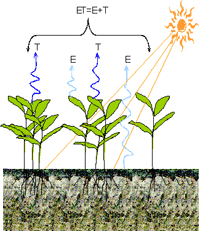Agricultural Research Division of IANR

West Central Research and Extension Center, North Platte
Date of this Version
2017
Citation
Agricultural Sciences, 8, 316-325
Abstract
Biochar, a byproduct from the biofuels industry, may be a potential feed additive in ruminant diets due to possible improvements in microbial fermentation. Therefore, the objective of this study was to determine the nutritive value, in vitro digestibility, volatile fatty acid (VFA) production, and gas production of biochar inclusion to an orchard grass (Dactylis glomerata) basal diet. The study was designed as a 3 × 2 factorial arrangement with 3 different biochar sources and 2 biochar processed sizes as the main effects factors. Experimental treatments were biochar from 3 different tree types: 1) Chestnut Oak (Quercus prinus L.; CO), 2) Yellow Poplar (Liriodendron tulipifera; YP), or 3) White Pine (Pinus strobus L.; WP), and processed at 2 different biochar particle sizes: a) μm (Fine) or b) >178 μm (Coarse). Biochar was added to the basal diet of orchard grass hay (872.35 g/kg of DM, 98.31 g/kg of CP, and 704.02 g/kg of aNDF, DM basis) at a rate of 81 g/kg DM. Biochar residual ash content was greater (P < 0.01) for Fine particle size and greater (P < 0.01) for CO and YP biochar sources. Biochar aNDF content exhibited a type × size interaction (P = 0.01) with lower aNDF content in both WP sizes compared with their respective biochar type and size. Gas production was not influenced (P = 0.23) by biochar tree type; however, gas production was increased (P = 0.05) by Fine particle size compared with Coarse biochar. The in vitro true digestibility (IVTD) of orchard grass hay was increased (P = 0.01) by the inclusion of Fine biochar particle size compared with Coarse particle size. Additionally, in vitro CP true digestibility (DCP) exhibited a type × size interaction (P = 0.01). Crude protein digestibility was lower for Fine particle-sized CO and WP biochar sources compared with Coarse particle-sized CO and WP (P ≤ 0.004). However, DCP was not different between Coarse and Fine particlesized YP biochar (P = 0.70). Volatile fatty acids (acetate, propionate, and butyrate) were not altered by biochar type (P ≥ 0.66) or particle size (P≥ 0.19). These results indicate that both tree type and particle size of biochar may need to be carefully considered before incorporating into a ruminant diet. Furthermore, Fine particle-sized biochar may be the most effective to incorporate as a feed additive in a ruminant diet based on digestibility parameters.


Comments
Copyright © 2017 by authors and Scientific Research Publishing Inc.
Open access
https://doi.org/10.4236/as.2017.84023